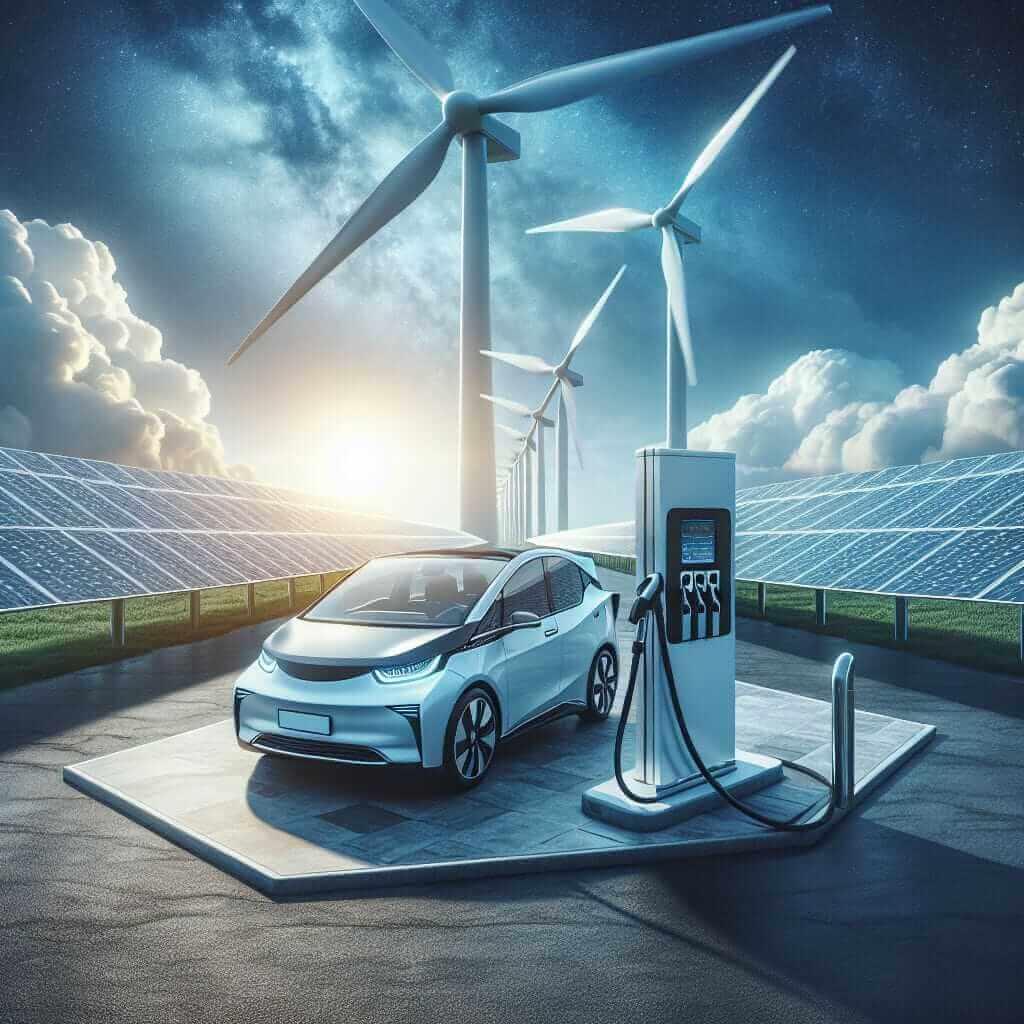The IELTS Reading section is a critical part of the IELTS exam, designed to test your reading skills, comprehension, time management, and vocabulary. It contains 40 questions to be answered in 60 minutes. These questions are based on passages that vary in difficulty and subject matter, ensuring a wide range of topics are covered. Over the years, topics related to renewable energy have become increasingly prominent, reflecting global trends and issues. One recurrent theme is the impact of renewable energy on transportation infrastructure. This article provides insight into how renewable energy is transforming transportation systems, offering a sample Reading passage and questions for practice.
Reading Passage and Questions
Medium Text Reading Passage
Renewable energy sources, such as solar, wind, and hydropower, are increasingly influencing the global transportation infrastructure. The transition from fossil fuels to renewables is driven by the urgent need to reduce greenhouse gas emissions and combat climate change. This shift is reshaping the design and functionality of transportation networks worldwide.
Electric vehicles (EVs) have emerged as a predominant symbol of renewable energy’s impact on transportation. Unlike traditional internal combustion engine vehicles, EVs produce zero tailpipe emissions, significantly reducing air pollution in urban areas. The proliferation of EV charging stations, powered by renewable energy sources, exemplifies the intersection of green energy and transportation. Governments and private companies are investing heavily in these stations, making EVs a more viable option for commuters.
Additionally, public transportation systems are integrating renewable energy in various ways. In some cities, buses and trains are being retrofitted to run on electricity, derived from solar and wind energy. These renewable-powered public transit options help decrease reliance on fossil fuels and reduce the overall carbon footprint of cities. Infrastructure such as solar panels installed on train stations and bus depots supply the necessary energy, highlighting a cohesive approach to sustainability.
However, the integration of renewable energy in transportation infrastructure is not without challenges. One significant issue is the intermittency of renewable energy sources. Solar and wind energy are dependent on weather conditions, which can lead to inconsistent energy supply. This necessitates the development of energy storage systems, like batteries, to ensure a stable supply of energy for transportation needs. Additionally, the initial costs of overhauling existing infrastructure to accommodate renewable energy can be prohibitive. Despite these challenges, the long-term environmental and economic benefits are motivating continued investment and innovation in this field.
The impact of renewable energy on transportation infrastructure is profound and multifaceted. It encompasses direct effects such as the reduction in emissions and indirect effects like the stimulation of green technology markets. As countries strive to meet international climate commitments, the role of renewable energy in transportation will likely expand, further transforming infrastructure and daily commutes.
Practice Questions
Multiple Choice
-
What is the primary reason for transitioning from fossil fuels to renewable energy in transportation?
- To reduce air pollution in rural areas
- To reduce greenhouse gas emissions
- To increase energy costs
- To decrease the use of electric vehicles
-
What role do EV charging stations powered by renewable energy play?
- Reducing the number of vehicles on roads
- Making EVs a less viable option
- Demonstrating the intersection of green energy and transportation
- Increasing reliance on fossil fuels
True/False/Not Given
-
Electric vehicles produce zero tailpipe emissions.
True | False | Not Given -
Renewable-powered public transit options increase reliance on fossil fuels.
True | False | Not Given -
The intermittency of renewable energy sources is a significant challenge.
True | False | Not Given
Matching Information
-
Match the following statements with the appropriate points in the passage:
a. Need for energy storage systems
b. Impact on urban air pollution
c. Economic benefits- ___ Integration of renewable energy in transportation infrastructure
- ___ Electric vehicles
- ___ Initial cost of overhauling existing infrastructure
Answer Keys
- B – To reduce greenhouse gas emissions
- C – Demonstrating the intersection of green energy and transportation
- True
- False
- True
-
a. Integration of renewable energy in transportation infrastructure
b. Electric vehicles
c. Initial cost of overhauling existing infrastructure
Common Mistakes and Learning Points
- Misinterpreting Details: Often, test-takers mistake minor details or specific bits of information. A thorough reading and understanding of each paragraph are crucial to avoid such errors.
- Time Management: Practice managing your time efficiently. Spend about 20 minutes on each passage to allocate time evenly and avoid rushing through the latter parts.
Vocabulary Guide
- Intermittency (noun) /ˌɪntərˈmɪtənsi/ – the irregular occurrence of something, particularly energy supply.
- Proliferation (noun) /prəˌlɪfəˈreɪʃən/ – rapid increase or spread.
- Retrofit (verb) /ˈrɛtrəʊfɪt/ – to add new technology or features to older systems.
- Overhaul (noun/verb) /ˌoʊvərˈhɔːl/ – comprehensive repair or renovation.
- Cohesive (adjective) /koʊˈhiːsɪv/ – forming a united whole.
Grammar Focus
- Use of Passive Voice: Often used in academic writing to focus on the action or state rather than who is performing the action. Example: “Renewable-powered public transit options are being retrofitted to run on electricity.”
- Complex Sentences: Combining multiple ideas into a single sentence to convey detailed information. Example: “The integration of renewable energy in transportation infrastructure is not without challenges, one of which is the intermittency of renewable energy sources.”
Advice for High IELTS Reading Scores
- Consistent Practice: Regularly practice reading a wide range of topics to improve comprehension and speed.
- Focus on Vocabulary: Enhance your vocabulary to better understand and interpret reading passages.
- Skimming and Scanning: Develop skills to quickly find key information within a passage.
- Practice Tests: Complete practice tests under timed conditions to build exam-day stamina and confidence.
 Electric car charging station powered by renewable energy
Electric car charging station powered by renewable energy
By understanding the impact of renewable energy on transportation infrastructure, and by practicing with relevant reading passages, you’ll be well-prepared to face similar topics in the IELTS Reading section.

